Dangerous Insects and Reptiles in Spain
Dangerous insects and Reptiles in Spain - As in every country there are literally 1000´s of different species of insects and reptiles, most are not dangerous to humans but some can be. The insects and reptiles listed on this page can be dangerous to humans and/or animals.
For non dangerous creepy crawlies (insects and reptiles) check out this page
What’s the Difference Between Venomous and Poisonous?
According to biologists, the term venomous is applied to organisms that bite (or sting) to inject their toxins, whereas the term poisonous applies to organisms that unload toxins via touch or other routes, both are obviously "Dangerous"
Bees, Hornets and Wasps etc
Asian predatory wasp or hornet (Vespa velutina)
These nasty hornets entered Spain in 2010 The 'Vespa velutina' is an invasive species from Asia, specifically from northern India and China. The velutina does not pose more danger to humans than that of the native species but cases of allergic reactions to velutin stings have increased significantly in recent years.
Asian wasps measure 3 centimeters. They are as big as a euro.
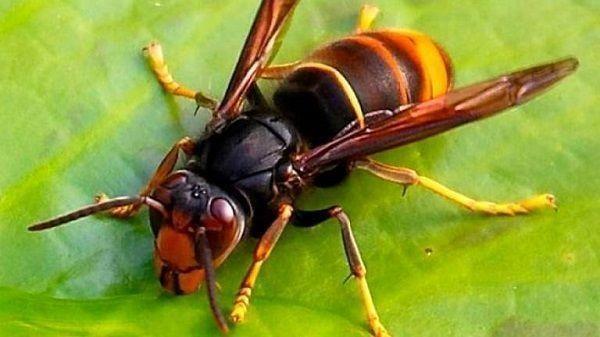
The sting from any of these insects can be very painful and deadly if you have an allergic reaction.
Try to withdraw the sting immediately but do not use tweezers because squeezing or pressing the sting can inject more poison into the skin.
It is recommended that you scratch off the sting with your fingernail, a knife or the edge of a credit card. Normal reaction to a sting is pain, itching and swelling of the injured area but these symptoms will pass off within hours.
Treatment: Clean the injured area and bathe with cold water.
Warning: Some people are severely sensitive to insect venom and can suffer respiratory and cardiac problems. If a person who has been stung shows signs of wheezing, breathing difficulties and/or facial swelling or has a rapid pulse, it is a sign that he/she has an allergy.
Do not delay: Call an ambulance or get to a hospital casualty department immediately. An allergy to such a sting can be life threatening. Call 112 in case of emergency.
Dangerous insects and reptiles in Spain
PROCESSIONARY PINE CATERPILLARS
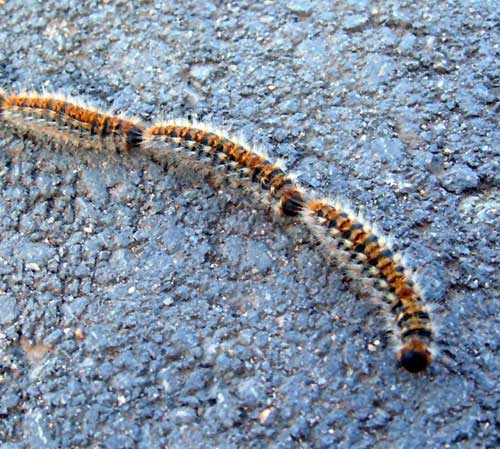
These Caterpillars (Thaumetopoea Pityocampa) may look cute and furry, but they are very DANGEROUS to children and especially dogs. DO NOT TOUCH THEM.
These are one of the most dangerous natural enemies to dogs and can be found all over Spain. Some have even made their way to parts of the UK:
The processionary pine caterpillar as the name suggests makes its home in a certain type of pine tree., damaging the trees over a period of time. These trees are very popular here in Spain and are a protected species so even if you have pine trees in the garden you cannot cut them down.
There is only one generation per year and most of the time the caterpillars are not seen and therefore not a threat. Read more HERE
Mosquitos
Europe was rife with malaria until the middle of the 20th century but Spain made great efforts to clear its wetlands where the problem was endemic and in 1964 malaria was declared to be eradicated from the country.
Asian Tiger Mosquito

The tiger mosquito has begun to spread through the interior of the province
The Asian tiger mosquito (Aedes albopictus) is a small black and white mosquito, about 1/4-inch long. The name "tiger mosquito" comes from its white and black pattern. It has a white stripe running down the center of its head and back with white bands on the legs. Unfortunately this mosquito can now be found in Spain.
The bite of the Asian tiger mosquito is not particularly irritating to most people, but they are persistent biters. The main difference between these and a normal mosquito is Asian tiger mosquito are active during the day.
Mosquito bites aren’t just a painful nuisance, they can pass on serious diseases to both humans and animals. Read more about Mosquitos HERE
Biting Midges – No-See-Ums
At certain times of the year these bites are inflicted by a very small black fly. This fly is part of the Ceratopogonidae family, and due to their small size are commonly known as NO-SEE-UMS. The common problem upon experiencing a bite from this insect is that you can feel something is biting, but the person suffering cannot see what it is. Biting midges are sometimes incorrectly referred to as sand flies. Sand flies are insects that belong to a different biological group and should not be confused with the biting midges. Read more HERE
Centipedes
Centipedes are generally considered to be more of a nuisance than a nasty, unless you have an allergy to their venom. They can give a sting, unpleasant but not dangerous, however all centipedes should be considered hazardous just in case you are one of the unfortunates who have the allergy.
Mediterranean Tiger Centipede – Escolopendra tigra
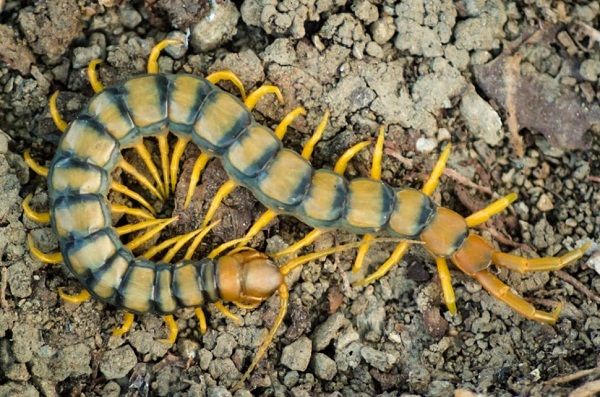
Found throughout Southern Spain and North Africa. The Mediterranean Tiger centipede is largest in Europe and can grow up to 150mm in length. The centipede’s markings change, depending on location.
Generally they are yellow with black stripes, hence the name tiger. Nocturnal and venomous; they can give a nasty bite. Rarely lethal, unless allergic to the venom, their stings are none-the-less extremely painful and require medical assistance. They have been given a toxic rating of two.
Dangerous insects and reptiles in Spain
Scorpions
Mediterranean Scorpion (Buthus Occitanus - Escorpion Amarillo)

The most common scorpion in Spain is the Mediterranean scorpion (Buthus occitanus, escorpión amarillo or just alacrán) it can give you an extremely nasty sting. You might want to think about wearing boots and thick socks if you plan to hike in dry rocky areas (most of wild Spain) as they are by no means rare. The females will eat the males if food is short on the ground.
The European black scorpion is also present in Spain, preferring more northerly and wetter areas. It's sting is short-lived. Scorpions like resting in your shoes, so give them a shake before putting your feet in.
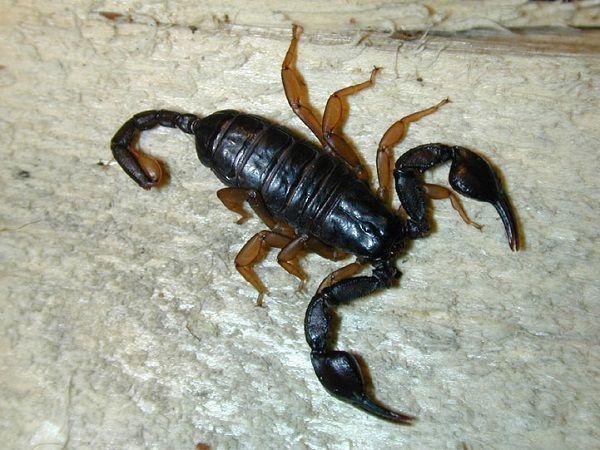
Dangerous insects and reptiles in Spain
Spiders
There are more than 1,700 species of spider in Spain but only four are in way harmful to humans.
Mediterranean Tarantulas
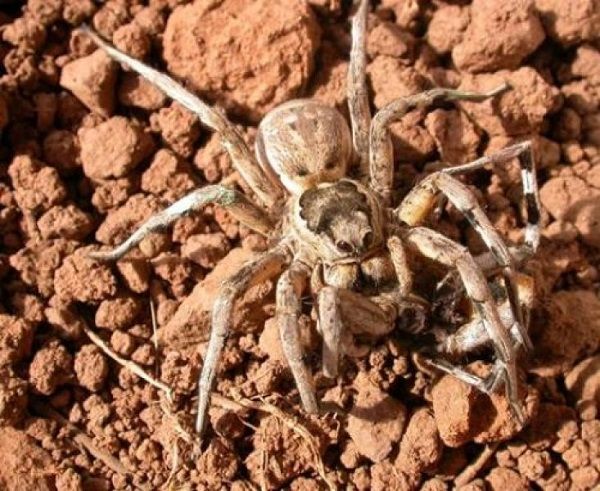
A spider with a look that is worse than the bite. A Mediterranean Tarantula can be up to 14cms with a body the size of an egg. The bite gives you pain, but the effect is not worse than a wasp sting. Greater discomfort can be caused if removing the bristles on the back when it is threatened. This gives the same feeling as when you get fiberglass strands on your skin and can irritate for days. The spider is a night hunter, so it is unlikely that you will see it unless you love hiking at nighttime.
Mediterranean Funnel Web spider
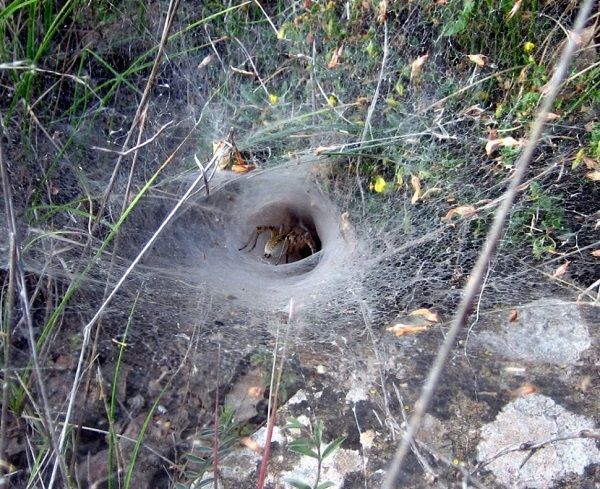
This spider is linked to their lethal cousins in Australia and especially in Sydney. Mediterranean funnel web spider looks impressive and staying in typical funnel-shaped net. The bite is causing a sting instead of a serious bite. Look for them or avoid them in the thickets and woods or a shady spot behind the sheds, together with garages or in hedges. Active all year during the day and night and is one of the most common spiders along the Mediterranean Sea and the coastal areas.
Black Widow Spider
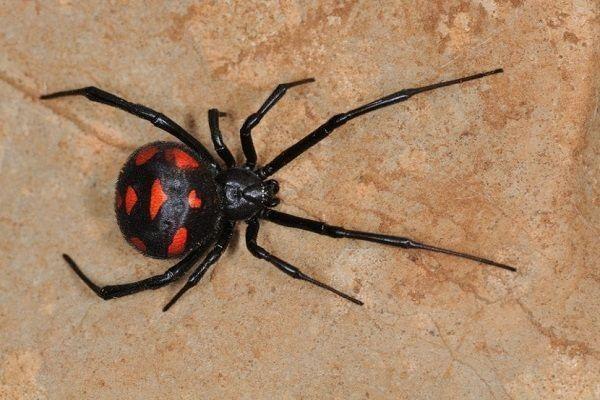
(Latrodectus Tredecimguttatus) is the most widely distributed species in Europe and is the most dangerous spider in Spain giving a nasty bite but not fatal. Whilst they are rare, it is said to be commonest in the arid parts of Almeria and Aragon and also in the Valencia and Andalucian regions. They are found in scrub and in Spain’s mild climate and is active all year round but are more likely to be seen during the mating season. The adult female is shiny and black with a red hourglass-shaped mark on the belly. The male’s brand, which is also hourglass-shaped, from yellow to white with a varying shade of orange and red. It also carries a small dot near the spinning gland which can vary in color. Usually it is also red but separated from the hourglass. A large female spider of this subspecies can be about 3.7 cm long including legs. The body is then approximately 1.2-1.5 cm, while the male is at most half as large as the female.
Brown Recluse Spiders
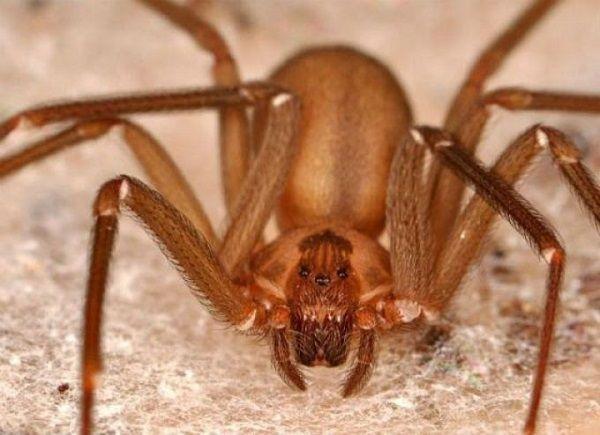
(Loxosceles Reclusa) are found in parts of Spain but are less virulent than in other parts of the world and is not lethal. Bites from this spider cause a tender blister to develop, characteristically with a “bull’s eye” appearance (a red centre). At the time a person is bitten, it is often hardly noticeable, and it can be several hours before the venom to takes effect. Then, it is very painful.
Symptoms of a spider bite
If you are bitten: Always try to kill the spider and keep the body. This helps the doctor to identify which spider anti venom is needed for treatment.
Using images alone, it can be difficult to distinguish a spider bite from other insects. To receive the proper treatment, it is important to recognize the symptoms of a spider bite.
1. Before you can examine it, it is important to wash the wound with soap and water. This will make identification bite much easier.
2. Check to see if the bite is raised. A common symptom of spider bite is that the skin becomes irritated and raised. It may look like a blister and will probably itch or sting. If the bite diminishes or disappears, it is probably a common house spider or other insect.
3. If you experience nausea, headache, severe skin damage, a lot of pain, or muscle spasms. Is this the signs and symptoms of a serious spider bite and you should see a doctor immediately.
Seeing a spider bite, it is important that you get antivenom that you get at most pharmacies, hospitals and among physicians in Spain. It is recommended to kill the spider and take it with you for identification.
Treatment: Do not ignore bites. Always get medical attention as early as possible.
Dangerous insects and reptiles in Spain
Ticks
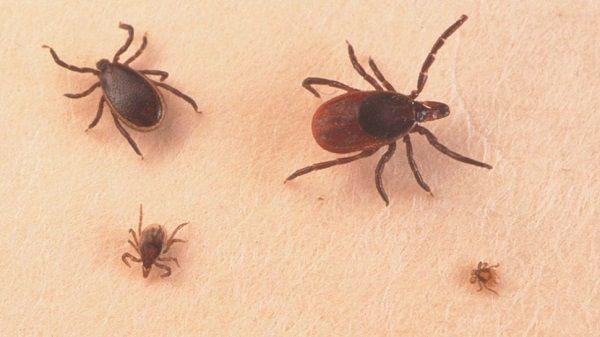
Ticks are small, blood-sucking bugs. They can range in size from as small as a pin head to as large as a pencil eraser they have eight legs and are classed as arachnids, which means they’re related to spiders. There are different kinds of ticks and they range in colour from shades of brown to reddish brown and black.
Ticks are prevalent in Spain and they can transmit nasty diseases to your pet such as canine Babesiosis and Ehrlichiosis. They can cause dogs and cats incurable damage which incurs lifelong administration of drugs. There is as yet no known cure.
As they take in more blood, ticks grow. At their largest, ticks can be about the size of a marble. After a tick has been feeding on its host for several days, they become engorged and can turn a greenish-blue colour.
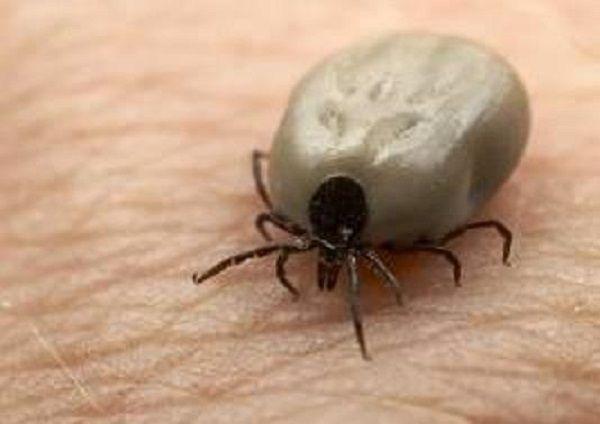
How to remove a tick
The most important thing to do when you find a tick is to remove it. You can remove the tick yourself with a tick removal tool or with a set of tweezers.
Follow these steps: Grasp the tick as close as you can to your skin’s surface.
Pull straight up and away from the skin, applying steady pressure. Try not to bend or twist the tick.
Check the bite site to see if you left any of the tick’s head or mouth parts in the bite. If so, remove those.
Clean the bite site with soap and water.
Once you’ve removed the tick, submerge it in rubbing alcohol to make sure it’s dead. Place it in a sealed container.
This also seems to work Apply a glob of liquid soap to a cotton ball. Cover the tick with the soap-soaked cotton ball and swab it for a few seconds (15-20); the tick will come out on its own and be stuck to the cotton ball when you lift it away
If you find one on your pet, it is suggested that the tick should be doused with alcohol or spirit. This makes the tick contract and allows you to pull it out whole. Leaving a portion of the tick inside the dog/cat is likely to cause an abscess.
Prevention and Treatment for your pets: Various forms of prevention are available such as special collars against Sand fly, this will not also protect against Ticks and wearing Anti Tick and Sand Fly collars together is detrimental to the dog’s health, you can also protect your pets with anti tick drops which do not react against the chemicals in the collar. These drops are easily placed around the pet’s neck.
If ignored, in exceptional cases, tick fever can be fatal to the animal. It is most important that you are advised by a qualified vet.
For humans tick bites are usually harmless and may produce no symptoms. However, if you’re allergic to tick bites, you may experience: Pain or swelling at the bite site, a rash, a burning sensation at the bite site, blisters, difficulty breathing, if severe.
Some ticks carry diseases, which can be passed on when they bite. Tick-borne diseases can cause a variety of symptoms and usually develop within several days to a few weeks after a tick bite. Potential symptoms of tick-borne diseases include: a red spot or rash near the bite site, a full body rash, neck stiffness, headache, nausea, weakness, muscle or joint pain or achiness, a fever, chills, swollen lymph nodes
Be sure to seek medical attention as soon as possible if bitten by a tick and you have any of the symptoms above.
Sand Flies (Leishmaniasis)
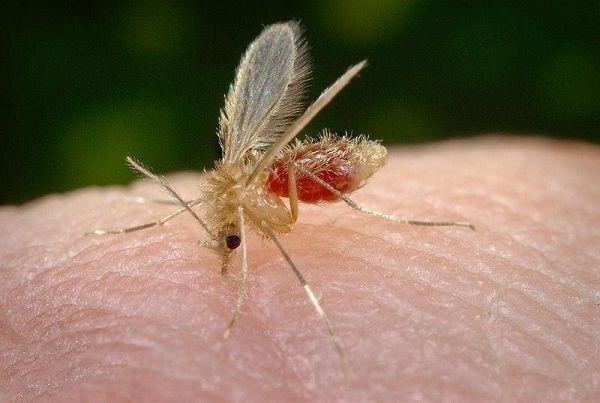
Your Pet Dog needs protection, otherwise it can be in serious danger
Dogs that regularly travel abroad may be exposed to Leishmaniasis (also known as Kala-Azar) which is carried from dog-to-dog by a bite from a Sand Fly.
The name 'Sand Fly' is misleading as the Sand Fly's natural habitat is in wooded and garden areas.
Dogs can be bitten up to 100 times an hour during the sand fly season which begins in May and ends in October. August is the worst month. The flies are mainly active between dusk and dawn. Early morning, 2 to 4am, is the worst period. They are not high flyers so your dog is better off in an upper room or flat at night. Fitting a preventative collar will protect your pet from approximately 95% of sand flies bites for the whole season. Dogs left out in the garden as security guards are particularly at risk.
It is thought that there may be very rare suspected cases of the disease being passed to humans; this is currently being research by the World Health Authority.
Prevention: The best preventative treatment up to now is , "INTERVET" based on mosquito repellents It is impregnated into a very effective collar called "SCALIBOR"
Please note, this collar lasts for one season only and needs replacing each May. Do not let children play with the collar, we have also found the smell somewhat unpleasant.
See your Vet about a collar before you travel to Spain. Mosquito repellents, sprays and some mosquito nets etc help to keep them out of the house. These flies are very tiny.
Things that the owner can do to prevent are:
Keep the dog inside the house when the sun starts to set, and keep toilet breaks short before bedtime.
Don't give night walks where water runs
Use of mosquito nets to keep flies out of the house.
Stinging Ants (Myrmica rubra laevinoides - hormiga roja chica)
This is, I believe, the only species of poisonous ant but whilst its bite is unpleasant it is said to be not serious unless you have an allergic reaction in which case call 112.
Dangerous insects and reptiles in Spain
Snakes - Pretty much all the snakes are protected by law in Spain, so don't even think about harming one.
In Spain there is 13 different types of snakes, but only five of these have venom that is fatal to humans. The most dangerous period is in the spring and summer as they hide during the cooler months of fall and winter.
Asp Viper
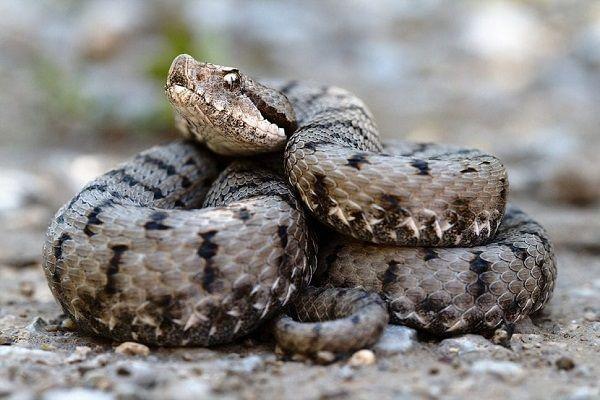
A very venomous snake in the cobra family where the venom from a bite can lead to cardiac arrest and death. There are not many in Spain, and is believed to be limited to the Pyrenees. If you are bitten by this poisonous snake, seek medical attention immediately.
Lataste´s Viper or the Snub-nosed Viper
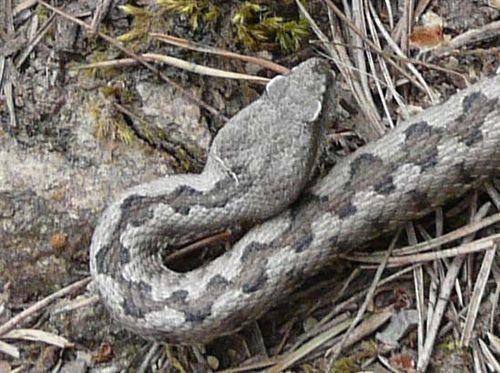
Lataste’s Viper is present in the Spanish peninsula. It is gray and short (around 50cm) and is characterized by its triangular head and a zigzag pattern on the back. It lives in dry, rocky areas. Be especially careful when collecting firewood and do not put your fingers in holes or cracks as this is where the snake can be found.
Seoane’s Viper
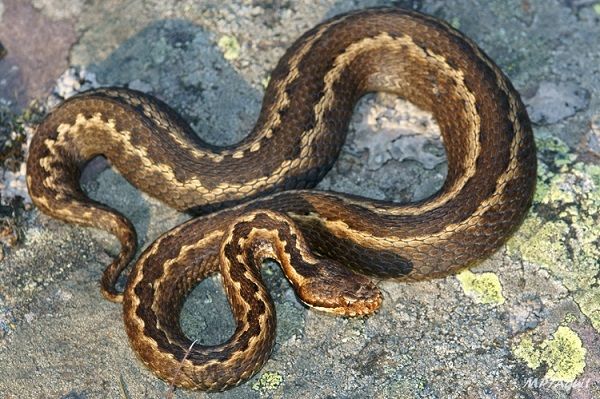
This snake is dangerous. It lives in Galicia, Leon, Biscay coastal strip (Cornisa Cantábrica) and Basque.
Montpellier Snake, Malpolon monspessulanus - More dangerous to animals than humans.
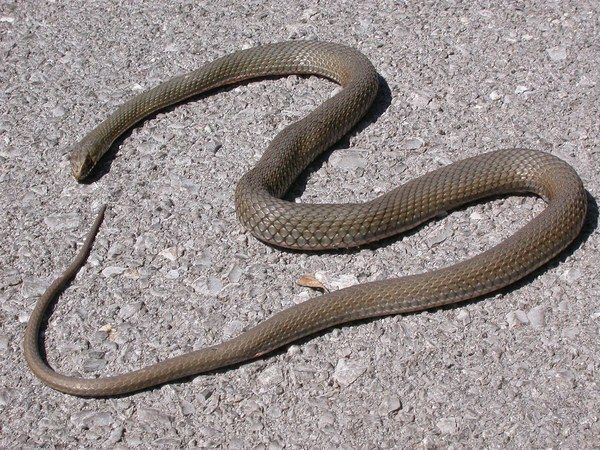
Commonly found throughout the Mediterranean and usually in dry rocky or scrubland areas, they can grow up to 2.00 metres (7 ft) long and may weigh up to 1.5 kilograms (3 lb). They have a thick body which in adults is a dark grey/green with the underside being lighter and often yellowish with darker marks, they have large eyes with round pupils surrounded by clearly visible rims, which makes them look more threatening than they are. They are generally active during the day and feed on small lizards.
The unthreatening nature of the snake, has made it one of the more common species, even in areas occupied by humans. This species is classed as mildly venomous to humans, but as its fangs are fixed and set at the back of the mouth it is unlikely to cause problems. In the unlikely event of being bitten the result would be extremely painful but not dangerous for most individuals. A bite could result in stiffness and swelling where bitten and a state of general lethargy and weakness and a severe headache, this may last a day or two.
If you are bitten by a snake, remain calm and seek medical attention immediately. Bites only occur in the spring and summer as snakes hibernate. Of the estimated 50 snakebite deaths a year in Europe, only 3-6 occur in Spain, so don't worry too much. More people die from bee and wasp stings.
Dangerous Creepy Crawlies in Spain
Fire Salamanders
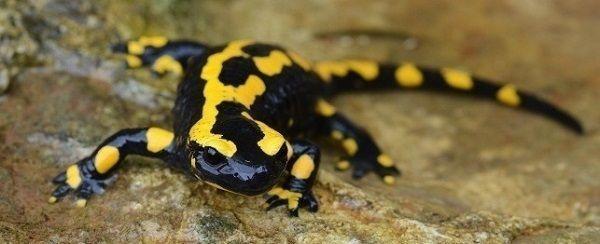
(Salamandra salamandra)
Very distinctive don’t get to close to this creature, it can discharge poison.
The poison glands of the fire salamander are concentrated in certain areas of the body, especially around the head and the dorsal skin surface. The coloured portions of the animal's skin usually coincide with these glands.
Jellyfish, vary in both harmful and harmless varieties, and are a very common sight along our local coastlines.



